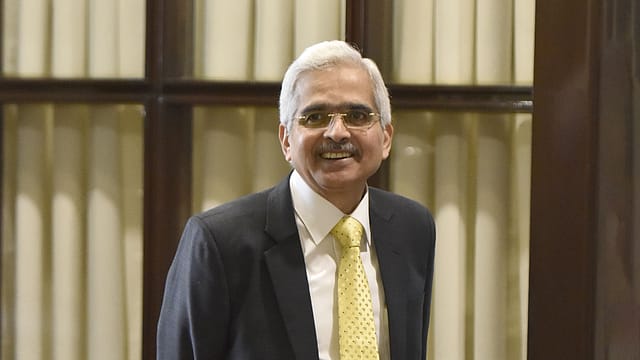Bank-NBFC links merit close attention: RBI governor
ADVERTISEMENT

Reserve Bank of India governor Shaktikanta Das on Wednesday said the increasing interconnectedness between banks and non-banking financial companies (NBFCs) merits close attention.
NBFCs are large net borrowers of funds from the financial system, with their exposure from the banks being the highest, Das says at a conference organised by FICCI and Indian Banks' Association (IBA) in Mumbai.
"Banks are also one of the key subscribers to the debentures and commercial papers issued by NBFCs. NBFCs also maintain borrowing relationships with multiple banks simultaneously. Needless to state that such concentrated linkages may create a contagion risk," the RBI governor says.
Though the banks are well capitalised, they must constantly evaluate their exposure to NBFCs and the exposure of individual NBFCs to multiple banks, according to Das.
The NBFCs on their part should focus on broad basing their funding sources and reducing overdependence on bank funding, the RBI governor says.
These comments come days after the banking regulator hiked the risk weights of consumer credit exposure of banks and NBFCs by 25 percentage points to 125%. Higher risk weight means that banks and NBFCs will need to set aside extra capital for personal loans.
January 2026
Netflix, which has been in India for a decade, has successfully struck a balance between high-class premium content and pricing that attracts a range of customers. Find out how the U.S. streaming giant evolved in India, plus an exclusive interview with CEO Ted Sarandos. Also read about the Best Investments for 2026, and how rising growth and easing inflation will come in handy for finance minister Nirmala Sitharaman as she prepares Budget 2026.
"We have also very recently announced a few macro prudential measures in the overall interest of sustainability. These measures are pre-emptive in nature. They are calibrated and targeted. It may be relevant to note that major growth drivers like loans for housing, vehicles and MSME sector have been excluded from these measures," the RBI governor says.
Das says banks and NBFCs would be well advised to take certain precautionary measures. "While credit growth is accelerating in the current period, banks and NBFCs may take due care to ensure that credit growth at the overall, sectoral and sub-sectoral levels remain sustainable and all forms of exuberance are avoided," he says.
Expansion of the credit portfolio itself and pricing of the same should be in sync with the risks envisaged, Das explains. "Banks and NBFCs also need to further strengthen their asset liability management. They may give greater attention to their liabilities side. In certain cases, we have observed increased reliance on high cost short term bulk deposits while the tenure of the loans, both in retail and corporate loans, is getting elongated," he adds.
"We are living in highly uncertain times in an interconnected world. New risks are emerging from time to time. New sources of risk are also coming up. In such a scenario, building up further on resilience would be the best insurance against shocks and uncertainties," Das says.
Banks, NBFCs and other financial entities must continue to do stress testing of their books, he emphasises. "In fact, there is a strong case for companies in the real sector also to stress test their businesses and balance sheets. Many of them may already be doing so, but it would be desirable that many more also do this," Das says.
